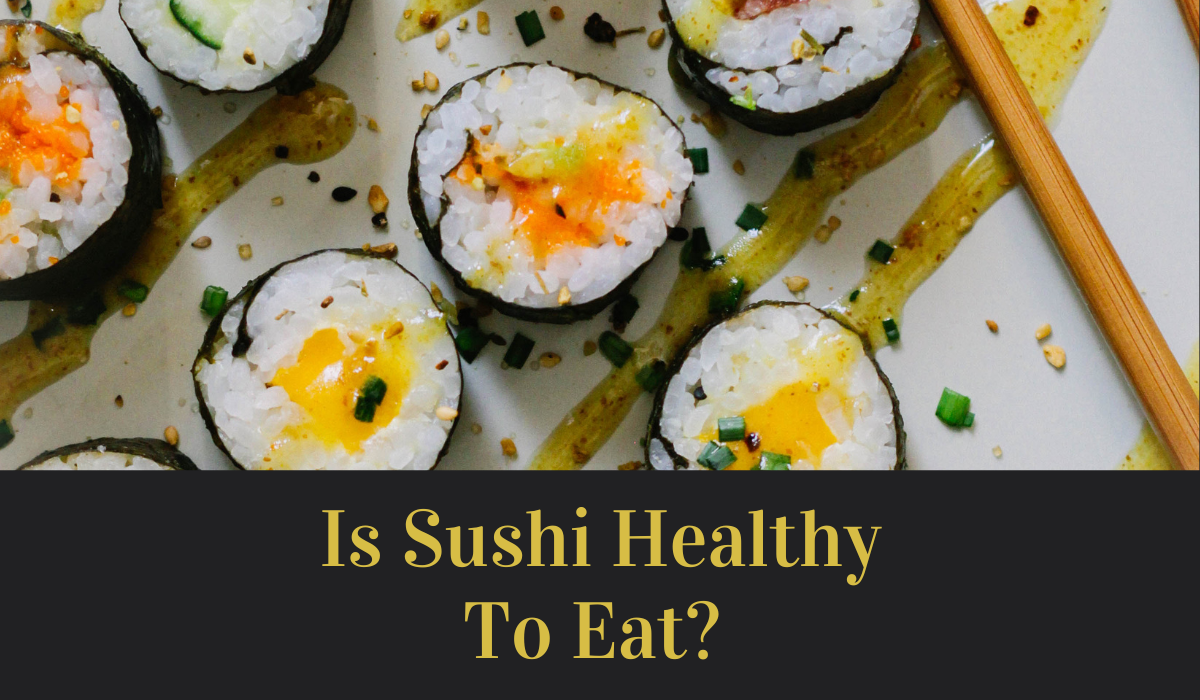Japan has one of the highest life expectancies in the world, and its cuisine plays a part in this. Sushi, traditional Japanese cuisine in which seasoned short-grain rice is made with vinegar and served with fillings and toppings such as vegetables, fish, and shellfish, is one of the most frequently consumed foods in Japan.
Health benefits of sushi
If you’ve never tasted sushi, you’re missing out on a tasty meal as well as the health benefits it offers. If you already enjoy sushi, you’ll enjoy learning more about its health benefits.
A good source of protein is fish. Although the majority of individuals consume enough protein, USDA My Plate advises adults to consume 5 to 7 ounces-equivalent of protein-rich foods every day. Since protein takes longer to digest than other nutrients, it fills you up and makes your meal more enjoyable. Sushi is a fantastic way to get your recommended meals of lean protein if you enjoy eating fish. To satisfy your needs if you’re a vegetarian or vegan, you can also eat sushi produced with plant-based proteins like tofu.
The omega-3 fats EPA (eicosapentaenoic acid) and DHA (docosahexaenoic acid), which are crucial for heart health, can be found in fatty fish like salmon and mackerel, which are frequently used as components in sushi. The American Heart Association advises eating at least two portions of cooked, 3.5-ounce fish each week, preferably fatty fish like salmon.
Additionally, fish is a good source of selenium, zinc, and iodine, as well as more vitamin D and vitamin B12 than other foods. (Try these other omega-3-rich sources.)
Sushi nutrition
Sushi is a beloved food because of the countless ways that its components may be combined to produce a wide variety of complicated yet alluring flavours. Restaurants can provide standard sushi selections with the house or speciality rolls, including the freshly tasted sashimi pieces, the renowned California roll, and the chopped scallop hand roll.
Typically, a regular maki roll contains between 20 and 28 calories per piece. For instance, a piece of vegetable maki (20g) has 20 calories while a piece of tuna maki (30g) has 29 calories, depending on the filling. Salmon nigiri (35g) has 37 calories per piece, while salmon sashimi (1 oz) has 36 calories per slice.
Rolls that have a crunch, like those that contain deep-fried ingredients, are also higher in calories and fat because they are made with fried ingredients. Examples of these roles include tempura rolls, which have fillings that are dipped in tempura batter before being deep-fried, and spider rolls, which have fried soft-shelled crab meat.
To put this into perspective, one shrimp roll (30g) contains 30 calories. On the other hand, a piece of shrimp tempura wrap has an additional 17 calories. Although there isn’t much of a difference, 6 pieces would mean an extra 100 calories.
You can also lose weight while eating sushi
The good news is that if you’re attempting to lose weight, sushi can be a part of your diet. You can avoid consuming more calories than necessary by following the advice given, such as ordering more of the standard rolls and fewer of the speciality rolls.
In addition to white rice, several eateries also serve brown rice. Replace the white with the brown fibre if you are trying to lose weight or improve your diet because it can be more filling and have less of an impact on your blood sugar.
Managing weight, preventing overeating, and putting on a few extra pounds all depend on careful eating. By chewing food thoroughly and slowly, you may pay attention to your body.
Sushi is not everyone’s cup of tea. It is an acquired taste. It depends from one person to another. A mix of authentic and rich flavours hits the taste buds differently. Just adding a little bit of masobi and soy sauce does wonder to it.
